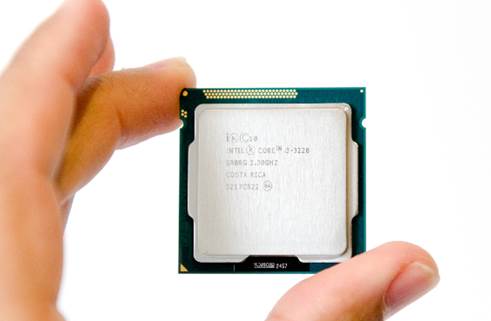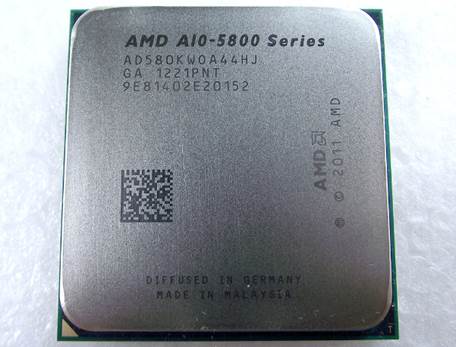Taking HSA to newer heights
In October last year, AMD officially
launched its new desktop A-Series APUs, top bilLED by the flagship A10-5800K
Black edition APU. The new APU makes use of Socket FM2, which is not compatible
with Socket FM1 motherboards. Hence, potential buyers of the A10-5800K will
have to buy a new board as well.

AMD
A10-5800K
The A10-5800K is a quad-core processor that
operates at 3.8GHz with a maximum turbo frequency of 4.2GHz and boasts a 4MB L2
cache. Its GPU is the Radeon HD 7660D, which features 384 cores and operates at
800MHz. The Trinity integrated GPUs are actually based on the old Cayman architecture
of the Northern Islands GPUs, featuring AMD Eyefinity Technology for up to four
displays. The flagship A10-5800K comes unlocked for easier overclocking, and is
denoted by the “K” demarcation at the end of the model number (similar to
Intel’s “K” series of CPUs).

The
A10-5800K is a quad-core processor that operates at 3.8GHz with a maximum turbo
frequency of 4.2GHz and boasts a 4MB L2 cache
The A10-5800K, along with other Trinity
APUs, holds special appeal to upgraders who don’t intend to get a discrete
graphics card. With integrated graphics that is more powerful than Intel’s HD
Graphics 2500/4000 brought about by its third-generation Core CPUs, the
A10-5800K will cater to the needs of casual gamers.
From a performance standpoint, the report
card of the A10-5800K is a mixed bag of gains over the previous generation
Llano APUs, especially in tasks that require more CPU processing power.
However, in certain multi-threaded tasks, it still loses out to the Llano,
though we had expected it to pull ahead. It appears that the PiLEDriver cores
have allowed the Trinity APU to pull ahead in terms of operating at much higher
clock speeds, but they don’t necessarily translate to improved performance all
around, even against the low-end Intel Core i3-3220, the A10-5800K was, for the
most part, slower.

The
report card of the A10-5800K is a mixed bag of gains over the previous
generation Llano apus
One test in which the A10-5800K did pull
ahead of Intel by a notable degree was in Battlefield Bad Company 2 where it
distanced itself by nearly a 25% lead and this was when all the platforms used
an identical discrete GPU. In terms of power consumption, the A10-5800K
consumed a minimum of 77W and a maximum of 187W, lower than the numbers that we
got when we tested the A8-3850 Llano APU (94W and 206W).

The
A10-5800K is a decent mainstream “quad-core” APU that can balance the needs of
work and play in a very simple platform
Overall, the A10-5800K is a decent
mainstream “quad-core” APU that can balance the needs of work and play in a
very simple platform. It doesn’t excel in very compute intensive tasks, but
when you consider the integrated GPU quotient, it more than makes up for its
losses.
Specifications
General Features
§ Type:
Desktop
§ Socket
Type: FM2
§ Model
ID: A10-5800K
General
§ Number
of Cores: 4 Cores
§ Speed:
3.8 GHz
§ Cache
Memory: 1024 KB (L2)
§ Voltage
Range: 0.825 V - 1.475 V
§ Manufacturing
Process: 32 nm
Memory
§
Memory Type Supported: DDR3-1866
Graphics
§ Integrated
Graphics: Yes
§ Base
Frequency: 3800 MHz
§ Other
Graphics Features: Radeon HD 7660D
Warranty
§ Service
Type: Carry In
§ Not
Covered in Warranty: Forceful Tampering, Burnt, Mishandling and Physical
Damage
§ Covered
in Warranty: Manufacturing Defects
§ Domestic
Term: 3 Years
§ Warranty
Type: Replacement
|